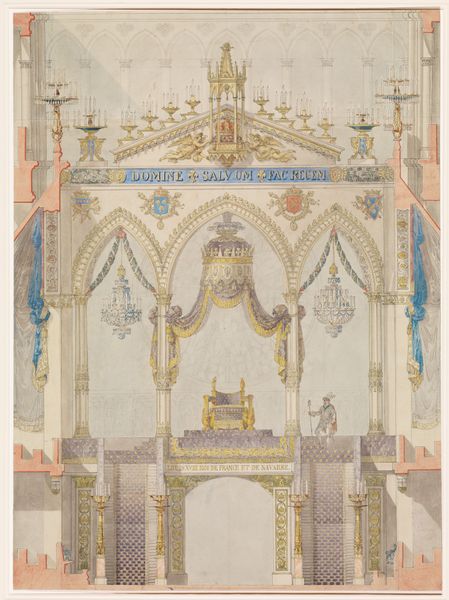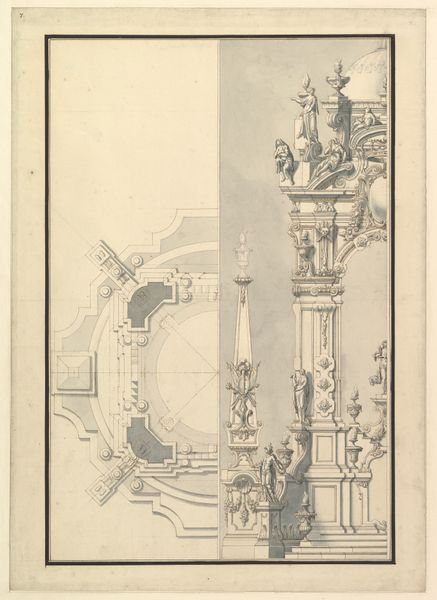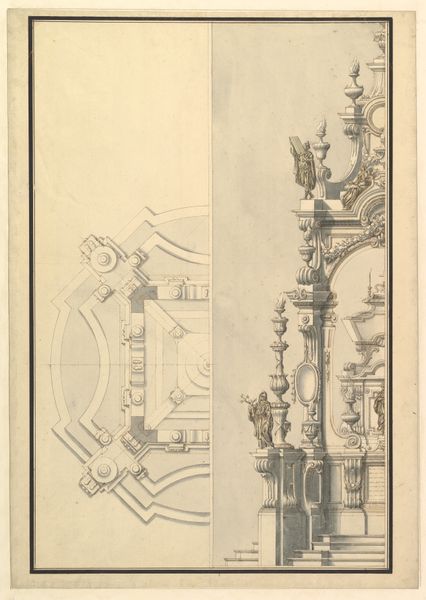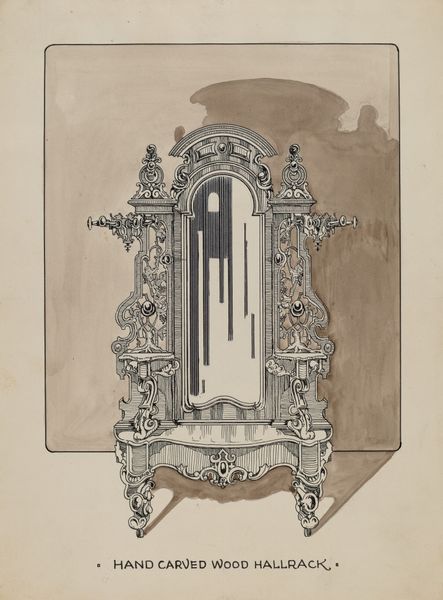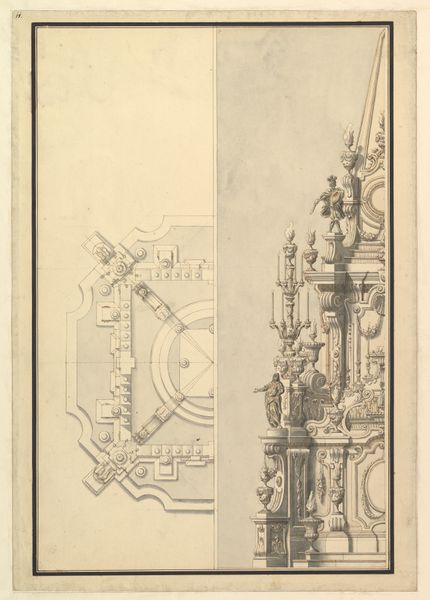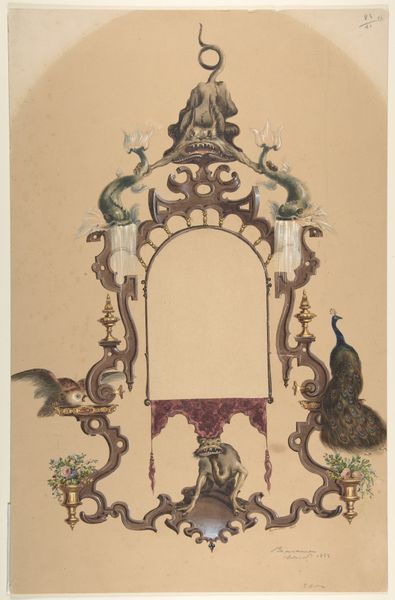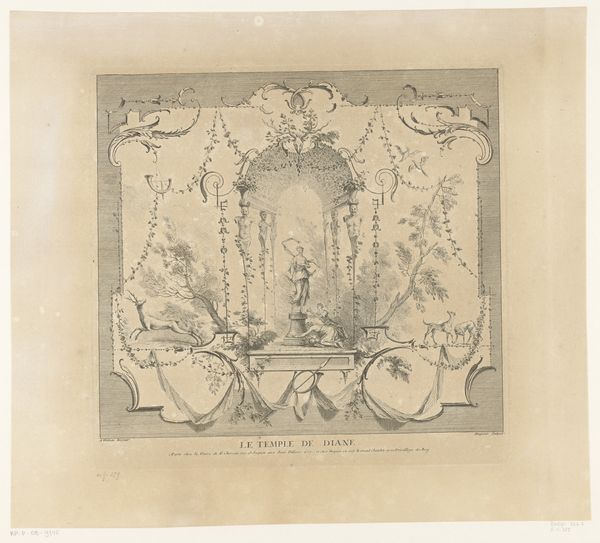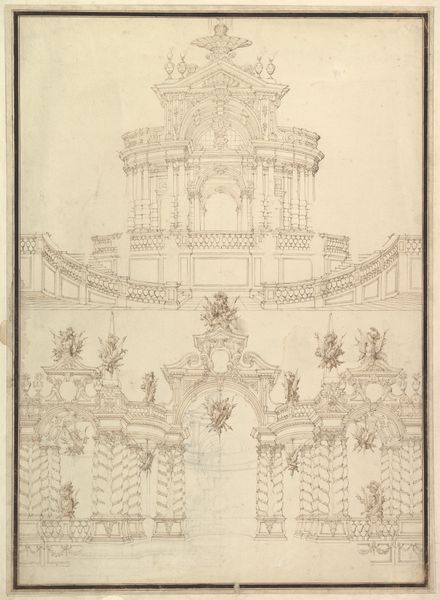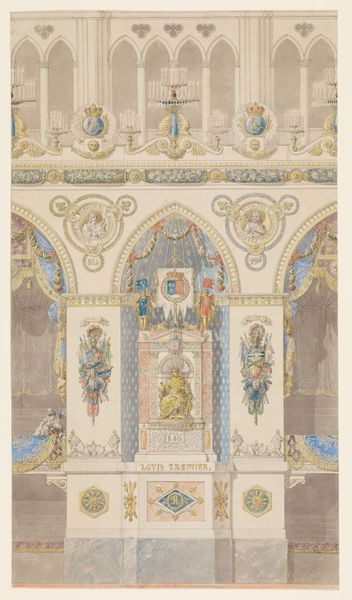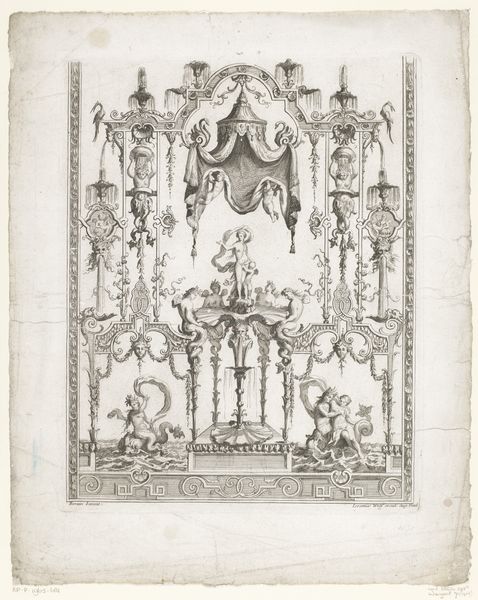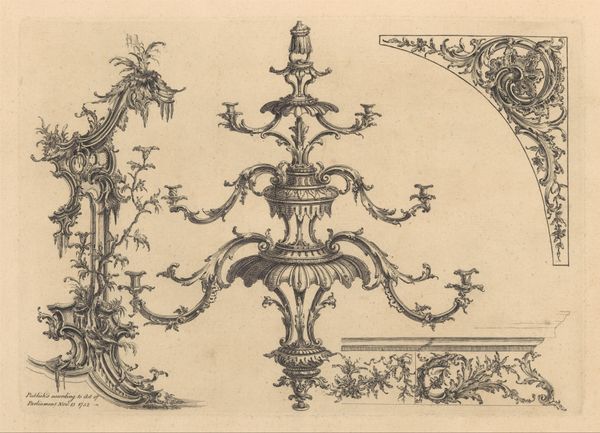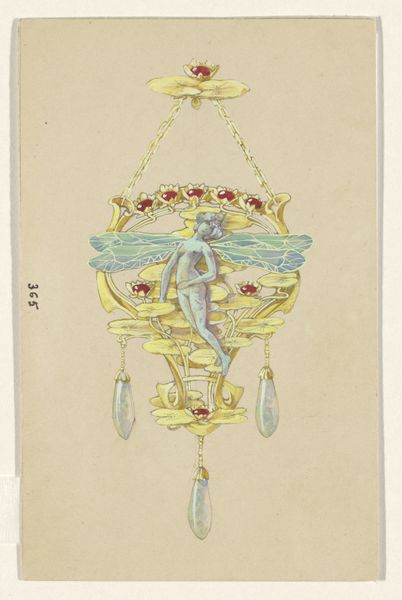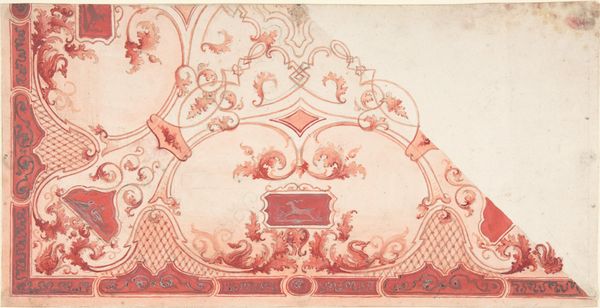
drawing, watercolor
#
art-deco
#
drawing
#
watercolor
#
geometric
#
cityscape
Dimensions: overall: 40.8 x 30.6 cm (16 1/16 x 12 1/16 in.) Original IAD Object: 20" repeat
Copyright: National Gallery of Art: CC0 1.0
Curator: Here we have Nicholas Acampora’s “Wall Paper” from 1937, a watercolor drawing on paper. Editor: It feels very Belle Époque. Elegant, but almost melancholic, with the muted colors and dreamlike quality. I’m drawn to the architectural forms and the implied social life. Curator: As the title suggests, this was designed as a repeating pattern, intended for mass production. Notice the art deco influences in the geometric structure, but also the loose watercolor washes suggesting atmospheric perspective. Consider how Acampora uses a seemingly "high art" medium like watercolor for something as inherently functional as wallpaper. Editor: The subject matter seems deliberately aspirational. Grand architecture, a suggestion of high society...it’s marketing an ideal of sophistication to a mass audience during the interwar period. Who would be consuming this image, and in what kind of space? What statement was being made about the inhabitant through this domestic environment? Curator: Right, and consider the labor involved. A design like this would be meticulously reproduced, likely using techniques that conceal the hand of the artist, emphasizing the mechanical reproduction of the image for a commercial purpose. The materiality of the wallpaper itself – its texture, the specific paper used – is equally important as its visual appeal. Editor: The choice of a cityscape is telling. It frames the domestic sphere within a vision of urbanity and progress, while simultaneously softening the edges of modern life with nostalgic architectural forms. It reminds us that even mass-produced images play a crucial role in shaping our cultural values. Curator: Indeed. By questioning the perceived hierarchy between art and design, Acampora pushes us to reflect on the very systems of value we apply to art objects. Editor: Ultimately, I find this more impactful now, as a singular image, separated from its intended purpose. It makes me consider the history of wallpaper as both art and functional object, and it underscores the constructed nature of the spaces we inhabit.
Comments
No comments
Be the first to comment and join the conversation on the ultimate creative platform.
